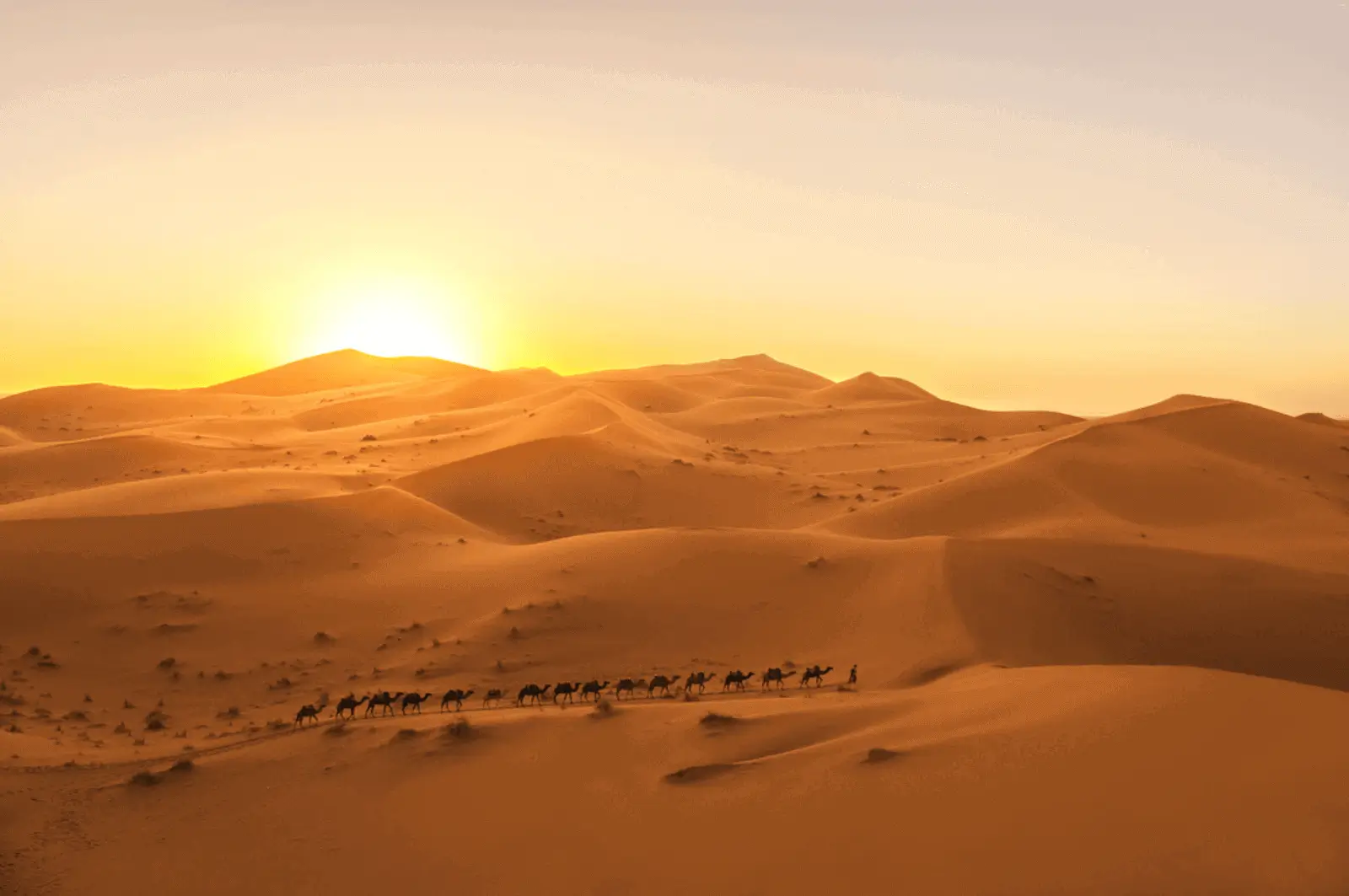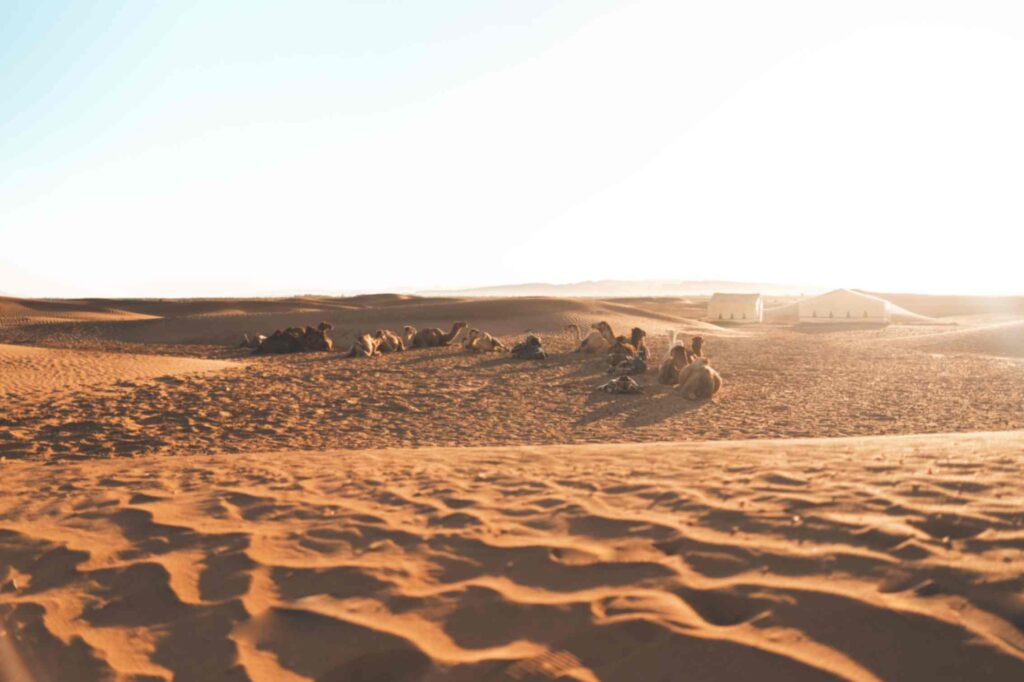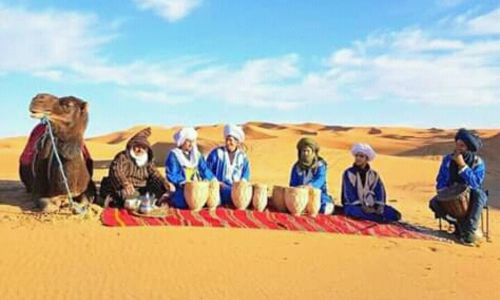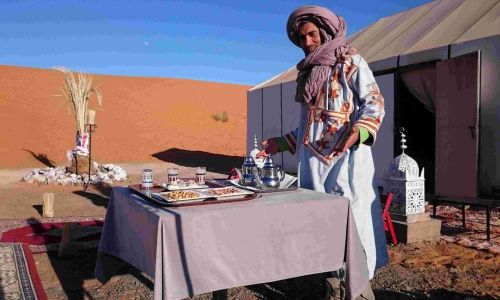CHOOSE ZAGORA OR MERZOUGA?
If you want to enjoy those dunes that you have seen in so many photos and movies you will have to go to the east of Morocco, near the border with Algeria, where the towns of Merzouga and Zagora are located.
Both deserts are not equal. The dunes of Merzouga are the best known and most visited, they are the highest impressive dunes that you can see in Morocco, they can reach 150m. In the Zagora desert there are less dunes and they are smaller. On the other hand, being less visited and having a greater extension this desert is more remote and there are many fewer tourists. Zagora is much closer to Marrakech, 350km away. As many travelers come from Marrakech and only have one night they opt for the Zagora desert. To visit Merzouga, 560km from Marrakech it is necessary to have at least two nights.
If time and budget are not a problem, the best is to make a 4 or 5 day excursion to the Merzouga Desert. It is truly impressive and with a trip of several days, you can enjoy the points of interest found along the way as well as enjoy the scenery. Places like Ait Ben Haddou, the Valley of the Roses, the Dades Gorges, the Valley of the Draa, and the Todra Gorges Todra, on the road between Marrakech and Merzouga are truly amazing. If instead you want to spend less days for the excursion or really run away from tourist places, visit Zagora, the only way to sleep one night in a desert haima. Until Ouarzazate the road is the same as to visit Merzouga, in this excursion important places like Ait Ben Haddou are also visited, so the route is also very interesting.





